
 |
| Oeceoclades
maculata
(Lindl) Lindl. is a species that always attracts the attention of the
researchers, may be because of its big area of dispersion, the biggest
of all species of Orchidaceae family. Since its description by Lindley, in l821, as Angraecum maculatum Lindl. its name has been modified many times. Considered as a plant which doesn't present many varieties, the orchidist Nelson Luiz Bittencourt came across, in Niterói, state of Rio de Janeiro, to a colony of an alba |
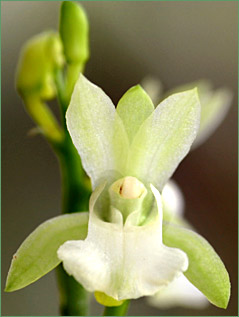 |
variety,surround by plants-type. It has been found at 110m altitude in
a sub-wood quite shade, growing on the surface soil (layer of dead leaves),
superficially installed, spreading its roots without penetrating the soil.
This plant presents some characteristics in the point of view of the vegetative aspect although it is, in the essence, very similar to the plant-type. It is more vigorous than the most part of the plants-type found in the same place and its pseudobulbs are from 3 to 4 cm long with 2 cm diameter. The leaves have 24 cm long by 6 cm wide and the color is much light green than in the plant-type. The inflorescence is long, at about 44 cm and has a curiosity: it is branched and light green. The petals and sepals are translucent and the lip is entirely white. It self-pollinates as easy as the plant-type. |
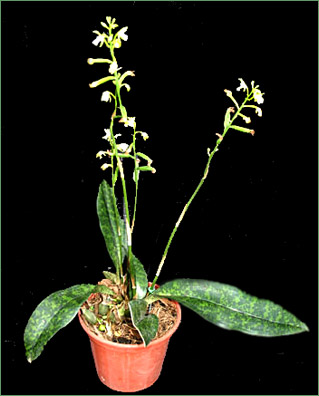 |
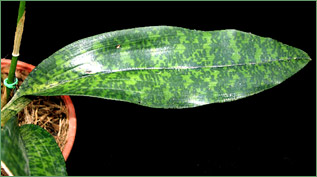 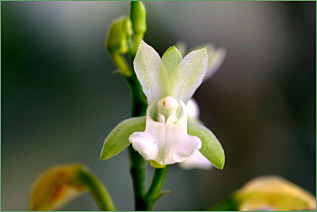 |
|
The
genus Oeceoclades Lindl. has at about 31 species and is distributed
through South and Central America as well in the south of North America,
tropical Africa, Madagascar, Mascarene and Seychelles islands. It is terrestrial
and rarely occurs as epiphyte. |
|
Its
small flowers are light pink and have, at about, 1,5 cm diameter.
The petals have from 9 to 10 mm length by 3 mm width . The sepals have from 9 to 10 mm length by 2 - 2 ½ mm width. The lip has 7-8 mm length by 6-7 width. It is white with 2 dark red strips. The inflorescence can reach 40 cm length and arises from the the base of the pseudobulb. It can bear 12 flowers or even more. It blooms in fall and often the flowers don't last because they wither just after the pollination and as it has the characteristic of autogamy (self pollination), it occurs very early. The origin of this plant is a mystery, it is supposed that it first appears in Madagascar. In fact, this is the orchid with the greater area of dispersion, distributed by tropical Africa tropical, from Senegal |
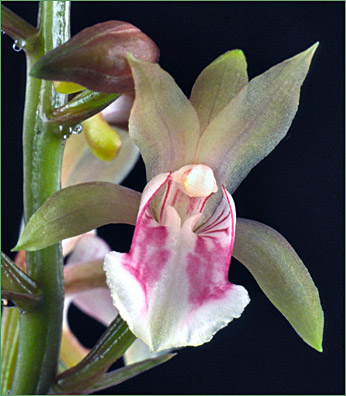 |
until
Angola, Zimbabwe and Tanzania , Florida, Caribbean Islands, Puerto Rico,
Dominican Republic, Bahamas, Brazil, Venezuela, Paraguay, Venezuela, Ecuador,
Bolivia, Argentine, Panama, Peru, Trinidad and Guyana. Also in Brazil,
it has a big area of dispersion and occurs, practically in every Brazilian
state, mainly at the sea side however it also spreads into to the interior:
AL, AM, AP, BA, CE, DF, ES, GO, MA, MG, MS, MT, PA, PE, PB, PR, RJ, RN,
RR, RS, SC.
The fact of being self pollinate propitiates that dispersion.
|
|
Synonymies: |
|
| 4)
The Illustrated Encyclopedia of Orchids. edited by Alec Pridgeon. 1992.
5) Flora Brasiliensis, Martius, Vol. III, Pars VI. 6) A Preliminary Checklist of the Genus Eulophia Sarah A. Thomas, Lindleyana 13(3):170.202.1998 Photos: José Alberto Senna and Sergio Araujo |
|
||